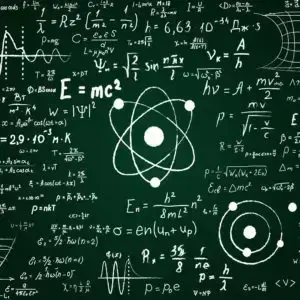Engineers at NASA say they have successfully revived thrusters aboard Voyager 1, the farthest spacecraft from our planet, in the nick of time before a planned communications blackout.
A side effect of upgrades to an Earth-based antenna that sends commands to Voyager 1 and its twin, Voyager 2, the communications pause could have occurred when the probe faced a critical issue — thruster failure — leaving the space agency without a way to save the historic mission. The new fix to the vehicle’s original roll thrusters, out of action since 2004, could help keep the veteran spacecraft operating until it’s able to contact home again next year.
Voyager 1, launched in September 1977, uses more than one set of thrusters to function properly. Primary thrusters carefully orient the spacecraft so it can keep its antenna pointed at Earth. This ensures that the probe can send back data it collects from its unique perspective 15.5 billion miles (25 billion kilometers) away in interstellar space, as well as receive commands sent by the Voyager team.


i just did some napkin maths, and currently, it is approximately 1 light day away from us (23.148 hrs, no relativistic consideration). For perspective, our nearest star is 4.25 light years away, and that is roughly 302.319161 times further than voyager. with voyager speed, it will reach centauri (not actually heading towards it, but just for distance perspective) in about in roughly 14511.319728 years (actually less than this).
edit - messed up the calc a bit, 302… should have been 1608.346293 and 14511… shoul dhave been 77200.622084, explanation in replies - root of errors - typo
Umm akhchually the nearest star is just 8 light minutes away fixes glasses
Much closer if you live near Elton John.
I do live near him. In fact, I happen to live on the same planet!
well you are techincally correct, the best kind of correct
snort
space is nuts.
Only a small portion of space is almonds, walnuts, and so on, less than half
much less than half
Is that before or after adjustment for the theoretical Macadamia Nebula?
you may think it’s a long way down the road to the chemist’s
Space is an appropriate name. It’s just a lot of space with some hydrogen and helium dispersed throughout.
The heavier elements we measure in stars are such a tiny % of matter they become negligible outside of stars.
And it’s big. We have no human way to comprehend how big it is. I fucking love space.
same. My field is biology but I love stars, planets, black holes, all that primordial shit you can just inject it straight into my veins I can’t get enough. I took an astronomy elective in university and it was pretty fun.
Explains why the universe is in a nutshell.
That doesn’t make sense though. How’d you get to 302? 302 times farther should only be about 302 light days away. It should be 365x4.25=1,551.25 light days farther from us.
That bit of the napkin has a smudge.
sorry, i messed up calculation
= (25*(10^9)*1000/(3 * 10^8))/(3600) 23.148148 = (4.25*365)*24/123.148 302.319161the 123.148 should have been 23.148, i somehow got a extra 1 in there, so that reduced final value by nearly 5 times, hence i got ~300 days instead of ~1500 days
sorry, then number of days should be 1608.346293 (24/23… * 365*4.25), and total time to reach there is 77200.622084 years (it should be less than this)
Also interesting
https://what-if.xkcd.com/38/